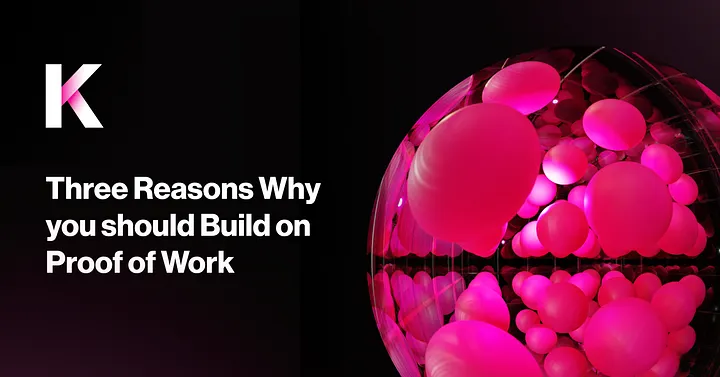Proof of Work vs Proof of Stake, Kadena’s Advantages, Explained
Kadena is currently the only blockchain on a proof-of-work model that can expand to handle global transaction volumes. This makes it scalable, a difficult feat to accomplish. This forms the building blocks of Kadena’s ecosystem, verifying transactions in a more resilient manner that gives developers room to flex up capacity when their projects take off.
With a dynamic design that self-adjusts according to the amount of computing miners are using to mine blocks, Kadena is similar to Bitcoin’s design. What distinguishes Kadena from Bitcoin is that it has 20 chains of blocks, versus Bitcoin’s one chain, and Kadena can add more chains according to demand. Bitcoin was not structured this way and is, therefore, unable to scale to the capacity of Kadena’s chains.
Proof of Work is also more battle-tested. Bitcoin has weathered technological attacks, regulatory risks and market volatility since 2009 and hasn’t suffered a catastrophic shutdown.
Here are 3 reasons why developers should build on Proof of Work.
1. It is decentralized.
There is no one authority that can control or cancel your transaction. While the proof-of-work model has been criticized as using arbitrary amounts of energy, this model strengthens the resilience of your network. This structure prevents your project from being subjected to validators whose self-interest could conflict with yours.
2. The alternative proof-of stake isn’t actually scalable.
“Proof of Stake is fast until it’s congested,” said Kadena founder and president Will Martino in a recent tweet. In September, Ethereum moved to a proof-of-stake model that gave it a temporary reprieve in capacity, but that capacity could still be constrained when volume increases.
3. There is less risk of having to comply with a more expansive regulatory regime.
Ethereum’s transition to a proof-of-stake model also promptly caused analysts and investors to consider the risk that it could trigger securities laws. Cryptocurrencies and brokers that allow holders to ‘stake’ their coins could lead courts to consider these assets as securities. Intermediaries that offer ‘staking’ services could be seen in a similar vein as lenders.
In short, Kadena’s network can increase its capacity to handle high volume throughput as needed by combining multiple parallel blockchains to achieve a Proof-of-Work consensus. The result enables developers to build on and reap all the benefits of a Proof-of-Work blockchain, as Kadena has effectively solved the Blockchain Trilemma of decentralization, security, and scalability.

